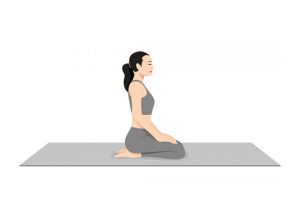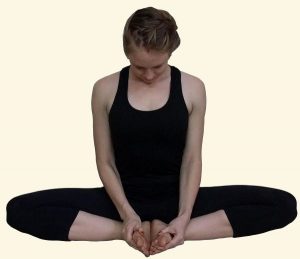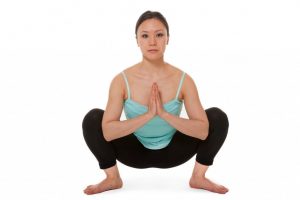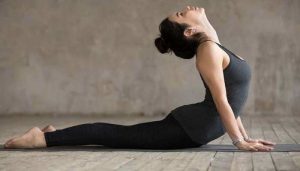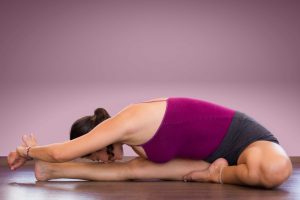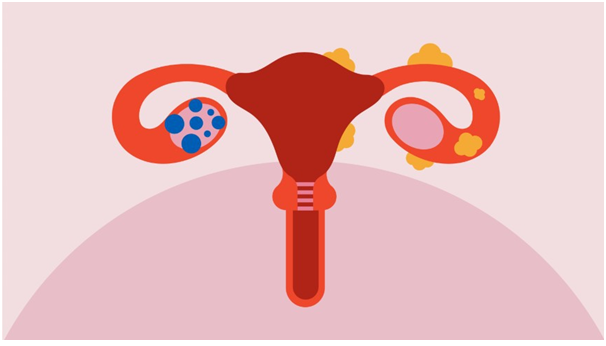
ENDOMETRIOSIS – YOGA ASANAS
- January 4, 2023
- Posted by Dr. Vaidya Karanvir Singh
- 0 Comment(s)
Table of Contents
WHAT IS ENDOMETRIOSIS?
Endometriosis is a medical condition which is characterized by the growth of endometrial tissue outside the uterus. Uterus consists of three layers – perimetrium, myometrium and endometrium. Endometrium is the innermost lining of the uterus. There occurs cyclical change in this layer during menstrual cycle. This tissue is normally present in uterus but in endometriosis, the tissue grows in fallopian tubes, ovaries and the lining of pelvis. The endometrial tissue can be present in pelvic organs sometime.
During each menstrual cycle, this tissue grows and bleeds. But the tissue which lines parts other than uterus doesn’t get a way to exit the body. It gets trapped and cause irritation of the surrounding body parts. Due to irritation, there develops adhesions, superficial lesions, nodules and scar tissue formation.
It is a very painful condition and can interfere in the daily activities of a person. Infertility can also occur with this. However, there are variety of treatment options available for it and with some of the dietary and lifestyle modifications, it can be managed.
WHAT ARE THE CAUSES OF ENDOMETRIOSIS?
The exact reason of endometriosis is not known but it can be due to following reasons:
- Abnormal functioning of immune system
- Transformation of peritoneal cells into endometrial cells
- Hormonal imbalance
- Transportation of endometrial cells through blood vessels and lymphatic system to other parts of body
- Retrograde menstruation – It is the backflow of menstrual blood from the uterus into the fallopian tubes and then back into the pelvic cavity
- Attachment of endometrial cells to the surgical incision such as after C-section or hysterectomy
- Defective formation of uterus or fallopian tubes
RISK FACTORS FOR ENDOMETRIOSIS
Some factors increase the risk of person developing endometriosis. Following are the factors:
- Having menopause at an early stage
- Heavy bleeding during menstruation
- Longer menstrual periods
- Short menstrual cycle such as less than 27 days
- Not giving birth
- Menopause at an older age
- Underweight
- Having a family history of endometriosis
- Higher estrogen levels in blood
- Infections of the reproductive tract
WHAT ARE THE SYMPTOMS OF ENDOMETRIOSIS?
The main symptom of endometriosis is pelvic pain. Following are the symptoms of endometriosis:
- Severe pain during periods
- Painful sexual intercourse
- Heavy menstrual bleeding
- Abdominal bloating
- Pain during urination
- Irregular bowel movements
- Difficulty in conceiving
- Infertility
- Nausea
- Diarrhea or constipation
COMPLICATIONS WHICH ARE ASSOCIATED WITH ENDOMETRIOSIS
Endometriosis has some of the following complications associated with it. Following are the complications:
- Infertility
- Uterine cancer
- Ovarian cancer
HOW YOGA IS BENEFICIAL IN MANAGING ENDOMETRIOSIS?
Yoga is a physical activity which helps in balancing both mind and body. It consists of various different poses which helps in increasing blood circulation and maintaining good muscle tone. It increases body flexibility and helps in eliminating toxins from the body.
Endometriosis is a health condition which can be managed by performing some of the following yoga asanas:
VAJRASANA
Vajra means diamond or thunderbolt and asana means body posture. So vajrasana is thunderbolt pose. It is also known as adamantine pose.
How to do it:
- Sit with the legs stretched straight in front.
- Fold both the legs and sit in a kneeling position. Hips are placed on the heels and toes are pointed behind. Big toes should touch each other.
- Head, neck and spine should be kept in straight line. Place the palms on thighs and face upwards.
- Now exhale and inhale. Beginners can hold the pose for 30 sec whereas experts can hold for a few minutes. After that, straighten your legs.
Contraindications:
- Slipped disc
- Trouble in foot, ankle and knees
BADHKONASANA
It is also known as Bhadrasana. Badh means restrained, kona means angle and asana means posture. How to do it:
- Sit with spine erect and legs spread straight out.
- Bend the knees and bring the feet towards the pelvis. The soles of the feet should be touching each other.
- Grab the feet tightly with the hands and make the heels as close to genitals as possible.
- Then, press the knees and thighs downwards towards the floor. Now flap both the legs up and down like the wings of a butterfly. One should start slow and then increase the speed gradually. Breathe normally.
- Fly as high as possible and as fast as a person can. Then slow down and stop.
- While breathing out, gently release the posture and straighten the legs in front and relax.
Contraindications:
- Knee injury
- Injury of the groin
- Lower back problem
MALASANA
It is the squat pose. It is very beneficial for treating irregular periods.
How to do it:
- Squat with keeping the feet as close together as possible.
- Separate the thighs slightly wider than torso and lean the torso forward.
- Press the elbows along the inner side of thighs and join the palms.
- Hold the posture for 20-30 seconds.
Contraindications:
- Low back pain
- Knee injury
BHUJANGASANA
Bhujanga means cobra and asana means body posture. Bhujangasana is the cobra or snake pose. It can be done easily at home while lying down on the stomach and then stretching. It gives a good stretch to the body and instantly relieves stress.
How to do it:
- Lie down in stomach with the toes flat and soles facing upwards.
- Rest the forehead on the ground, keep the legs closer with feet and heels touching each other.
- Now slowly lift the body while taking a deep breath in. The navel should be kept in ground level.
- Both the hands should have equal pressure while pulling on and off of the torso from the ground.
- Hold the pose for 4-5 breaths. Then, breathe out and bring the abdomen, chest and head gently on floor.
- Repeat it for 4-5 times.
Contraindications:
- Pregnancy
- Carpal tunnel syndrome
- Hernia
- Recent abdominal surgery
- Fracture of ribs or wrist joints
JANUSHIRSHASANA
Janu means knee and shirsha means head. Janushirshasana means head touching knee posture. The asana shouldbe performed empty stomach.
How to do it:
- Sit with legs stretched out in front, keep the spine erect.
- Bend the left knee and place the left foot against the right thigh, the left knee is on the floor.
- Raise both the arms up while breathing in and bend forwards from the hip joint while breathing out. Keep the spine straight during bending.
- Hold on to the big toes for as much time as a person feels comfortable. Keep breathing.
- Then, come up while breathing in and out. Bring the arms down to the sides.
- Then repeat the same procedure on the other side also.
Contraindications:
- Back pain
- Hernia
- Any recent abdominal surgery
- Neck injury

Dr. Vaidya Karanvir Singh is the younger Vaidya in Chandigarh Ayurved & Panchakarma Centre. He is the fourth generation in his family who is practicing as a general consultant in Ayurved & Panchakarma treatment at Chandigarh. In his practice, he had treated more than 1 Lakh Plus patients worldwide.


